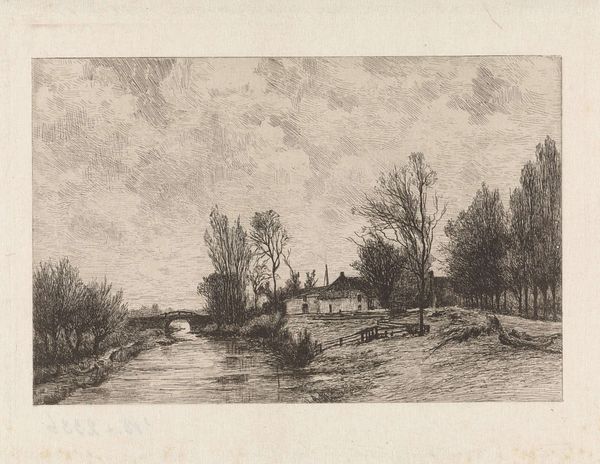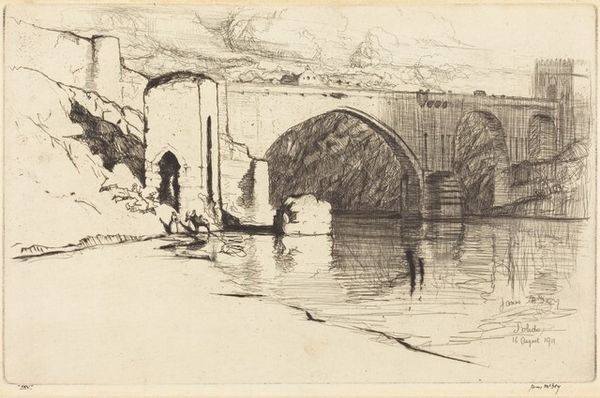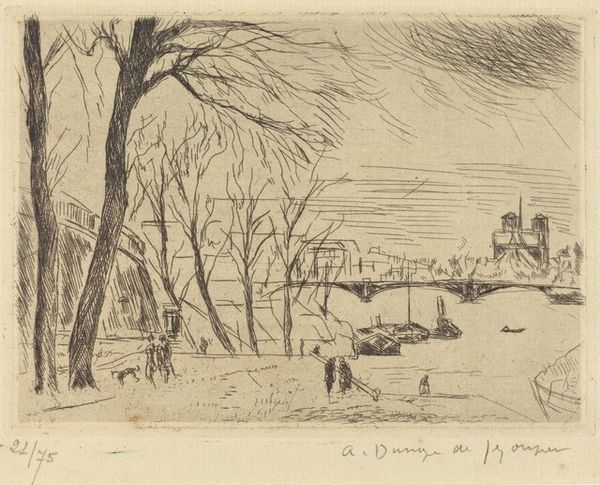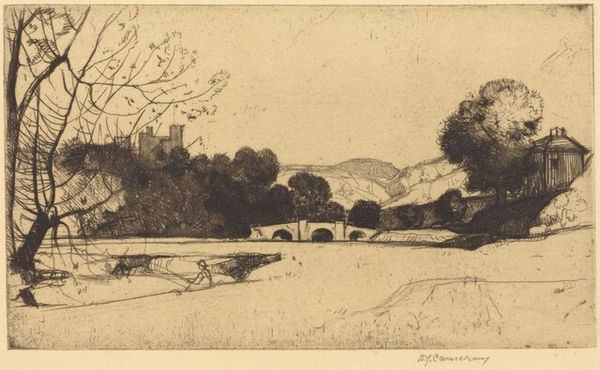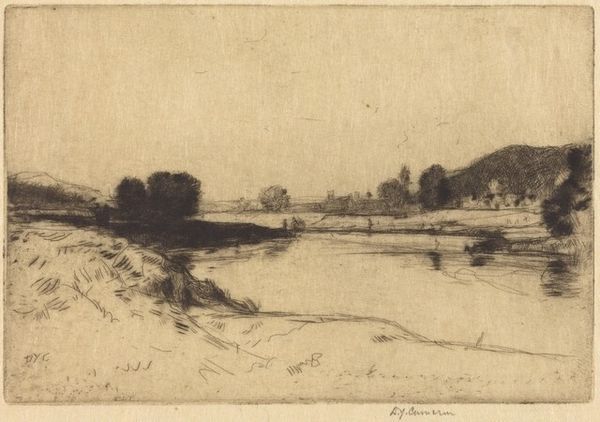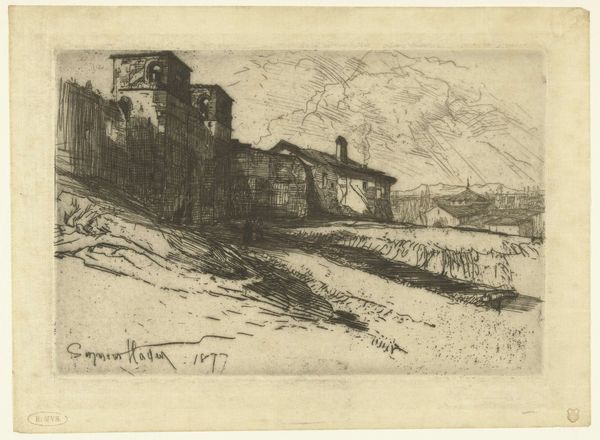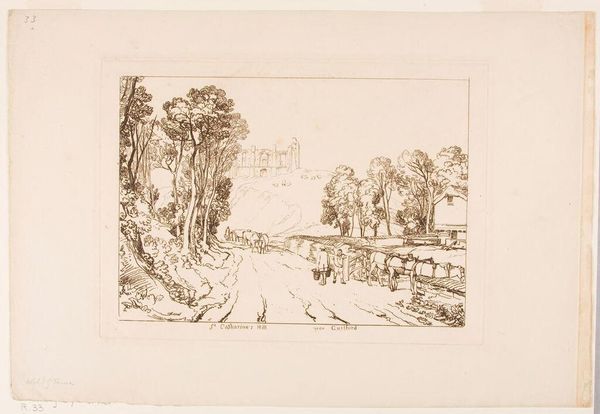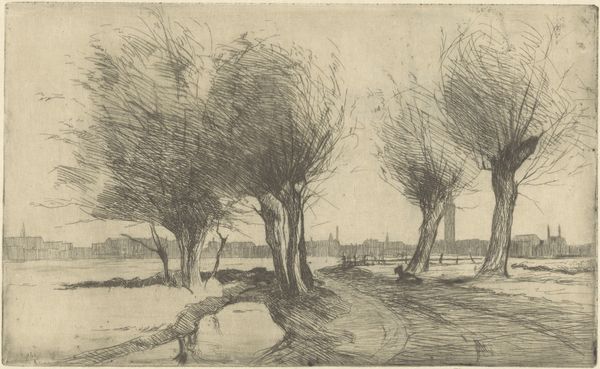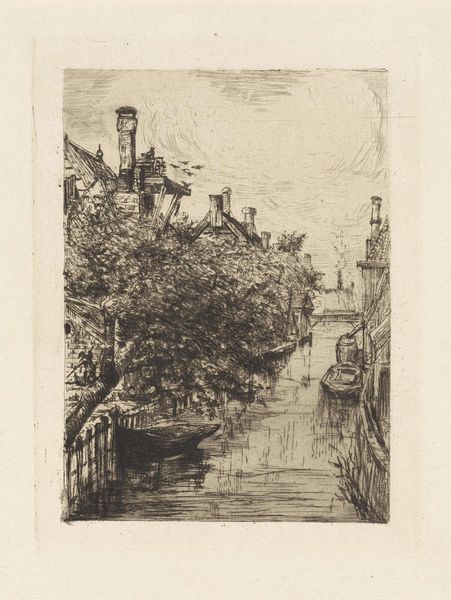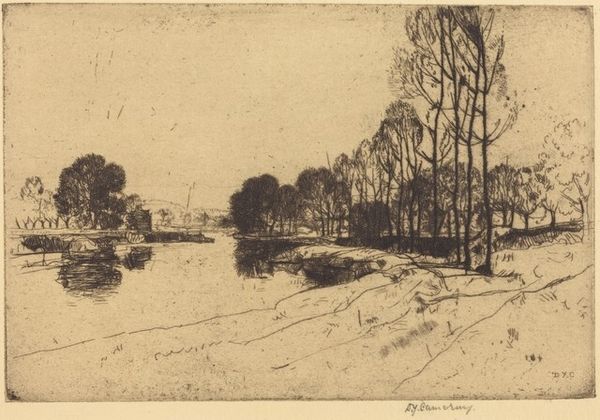
drawing, print, etching
#
pencil drawn
#
drawing
# print
#
etching
#
landscape
#
pencil drawing
#
realism
Copyright: National Gallery of Art: CC0 1.0
Editor: This is Jules Andr\u00e9 Smith's "The River Road, Segovia," an etching from 1921. There's a delicate, almost nostalgic quality to the scene, particularly in the rendering of the trees and the distant architecture. How do you read this landscape? Curator: The river road immediately strikes me as a symbolic journey, a passage through time and memory. Notice how the artist uses the bare trees—skeletal against the sky. Bare trees, as a motif, have symbolized vulnerability but also resilience. The tower in the background evokes a sense of history, permanence, contrasting with the ephemeral nature of the figures by the water. Editor: That’s fascinating! So you see the tower representing a collective history? Curator: Exactly. Consider Segovia's rich cultural past, including its Roman aqueduct. The tower echoes that endurance, the persistent human mark on the landscape. It's juxtaposed with the fluid, ever-changing nature of the river, a powerful dichotomy. Are there other symbols that you notice in the artwork that evoke powerful historical and cultural connections? Editor: I guess the bridge also. It’s a symbol of connection. People interacting over it as it connects opposite shores. Curator: Yes! A beautiful observation! Do you also agree that even seemingly natural landscapes are infused with meaning and memory that we can visually decode over time? Editor: I see that more clearly now. Initially, I only saw the etching as a realistic depiction of a place. Now it appears I was very wrong to overlook all its latent meaning. Thank you for that insight!
Comments
No comments
Be the first to comment and join the conversation on the ultimate creative platform.
